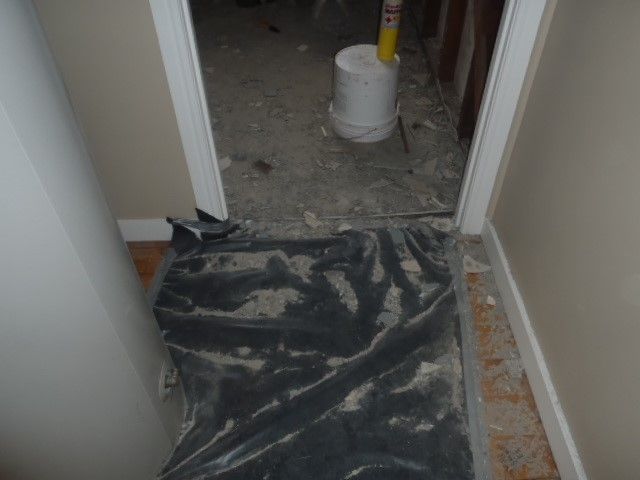Before you begin a renovation in your home it is important for both yourself and those conducting the renovation that all asbestos containing materials within your home have been identified. Asbestos could be located in places you might never have thought to look see https://www.asbestostesting.com.au/news1/asbestos-where-you-might-never-expect/
As such it is crucial that a professional conduct an asbestos inspection to assist you in identifying these potential asbestos materials.
“My builder told me it is not asbestos”
Did your builder look at the material under a microscope? Unless a material is analysed in a laboratory it is impossible to determine if a product contains asbestos or not. Asbestos fibres can be invisible to the naked eye and without conducting NATA accredited laboratory analysis on the materials your builder cannot say definitively that a product does not contain asbestos.
“My house is too new to have asbestos”
Legislation which completely prohibited the use or re-use of asbestos and asbestos containing materials in Australia came into effect in 2004. After this date there is no requirement for a structure to be inspected for asbestos unless there is a reason to believe it may contain asbestos products. Such reasons would include a DIY renovation where materials found under the house or in the back of the shed where utilised rather than purchasing new products. If construction of your home began prior to 2004, or if a DIY renovation has occurred using ‘spare’ materials, you unfortunately cannot rule out the presence of asbestos.
“My home is too old to have asbestos”
Whilst asbestos was not part of the construction in turn of the century homes this does not mean they are asbestos free. It is extremely unlike that you will find a home which has not seen any renovations, repairs or additions since first constructed. It is these additions to the original home which might hide asbestos.
“No one has heard of this containing asbestos “
If a product is manmade, someone could have put asbestos in it. Whilst the practice of putting asbestos in plasters, putties or paints for example was not common place for home construction it does not rule out that it occurred. The inclusion of asbestos in such construction materials made for a more durable and fire resistant product, and anyone with access to raw asbestos, such as those in the manufacturing or construction industry, could very easily have added it to products used in their own home.
Without advice from an experienced asbestos assessor or results from a NATA accredited laboratory your renovation could turn into a nightmare. Asbestos can only be identified via microscopic analysis in a NATA accredited laboratory and this is the only method you should rely upon.
Arrange for one of our experienced assessors to assist you before you commence your renovation to ensure the safety of yourself and those around you.
Author: Amy Morris

Email: Melbourne@AsbestosTesting.com.au
Amy Morris is a Property Risk Assessor at Safe Environments Victoria with a Bachelor of Science (Forensic Science) and associated Biology major and Forensic Chemistry sub-major. Having worked both nationally and internationally in her field Amy is familiar with current standards and legislation for asbestos and other hazardous substances. Trained under Safe Environments NATA endorsed training program she regularly conducts residential and commercial asbestos inspections and provides consulting services to individuals and companies.


